Sea Ice Training
October 20, 2008
MCMURDO STATION, ANTARCTICA– The Hagglund awaited us as we prepared to depart for sea ice training. This was a requirement since our expedition is to be based on the ice that forms over the ocean of McMurdo Sound every austral winter. We had to learn how to identify cracks and do thickness profiles of the ice across them, how to determine if a crack was safe to cross depending on what type of vehicle we were traveling in, and how to make ice anchors to secure things like our tents or equipment to the ice.
The first introduction was looking at the tide crack just off from McMurdo Station. This forms between the fast ice which is attached to land and doesn’t move and the sea ice which succumbs to the rising and falling of the tides. A tide crack forms everywhere where there is sea ice meeting land. We poked at it with bamboo poles to check for snow thickness and competency to make sure where we were walking was secure.
We hopped back into the Hagglund and drove north along the flagged Cape Evans Road in search of cracks between plates of sea ice. We drove past the Erebus Glacial Tongue, through the Dellbridge Islands which are actually the high points of a former volcanic mountain that is buried beneath the ice. Soon we came up on the crack we were looking for.
We pulled up to some flags marking a crack that crossed the roadway. Now we would learn how to travel safely across the sea ice. Most first-year sea ice is about 2-meters thick (or about 6.5 feet), but the minimum thickness of ice to travel on is 30 inches, so in most cases we would be okay. The gap that forms in a crack is of critical importance to determine whether or not you can ride across it, and the minimum width is dependent on the length of how much of the vehicle is in contact with the surface. A crack is considered safe to cross if it is 1/3 or less of the length of the vehicle treads.
First thing when approaching a crack is to identify the edges of it by poking a bamboo pole into the snow. The snow should be excavated across the crack down to the ice surface. Then you drill to penetrate through the ice into the underlying water. This is done on either edge of the crack and in the gap. The thickness of the ice is measured through the drilled hole and recorded. The profile of the crack is then complete. The ice around the crack we analyzed was more than 30 inches and the width of the crack was less than 1/3 of the length of the vehicle, so it was determined that it was safe to cross and we carried on.
One of the more important things we learned was how to make a V-thread ice anchor. Being out on the sea ice there is very little snow cover. V-threads are used to secure things to the ice. The wind can be very strong in Antarctica, and anything not secured will surely blow away. V-thread ice anchors are constructed by drilling into the ice either with ice screws, as pictured below, or by using a drill.
Two holes are drilled at about 45-degree angles that intersect each other. A piece of strong rope is passed through these, knotted together, and anything that needs to be secured is lashed to the anchor line. The ice is quite strong, and when the wind blows powerfully, the ice anchors will make sure nothing blows away.
Once we were finished with our training we turned and headed back toward McMurdo Station with a steaming Mt. Erebus looming above us amid a picturesque swirling wispy sky.
We could see the remains of an iceberg nearby that became locked within the sea ice when it froze during the earlier winter.
We passed through the Dellbridge Islands that we came through on our outbound journey.
Yet what was in store was the highlight of the day. We found out that our next destination was an ice cave…



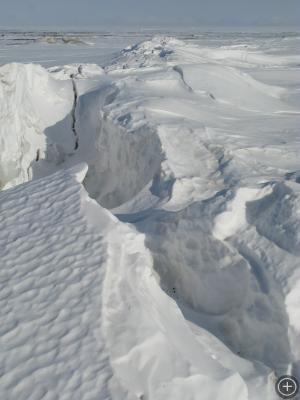
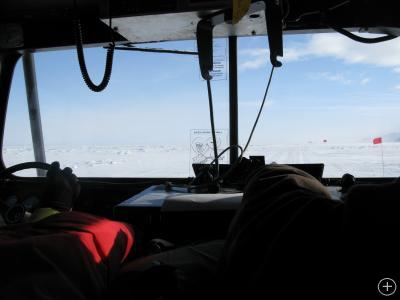
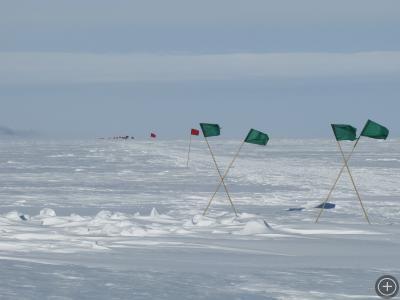
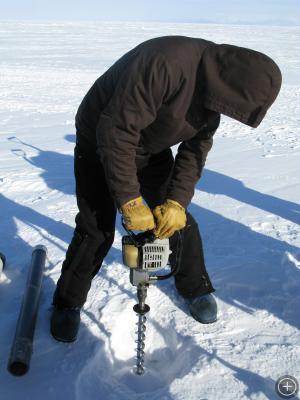

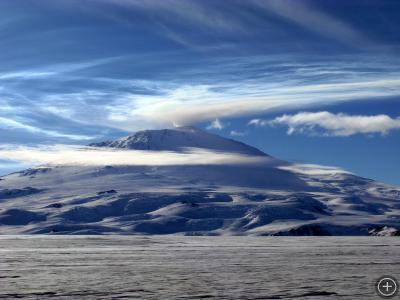
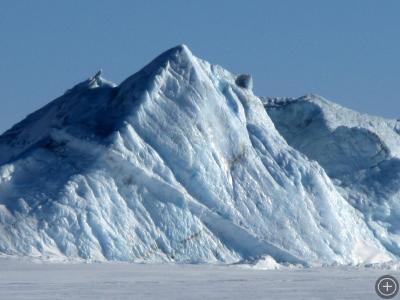
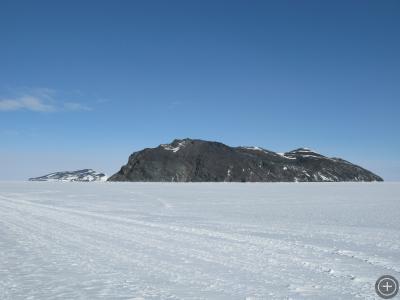



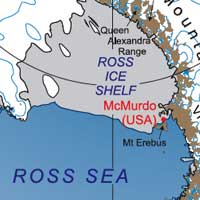





Wow! Those are some awesome pictures! Does the sea ice crack like that a lot?
Hey Howie
Ice training must have been great fun and cool pictures. I loved the picture of Mt. Erebus
if anyone keeps up with this..
could you tell me how much the average sea ice person makes on salary?
im doing a project for school & i cant find anything about the money they make or the edcational backround they need.